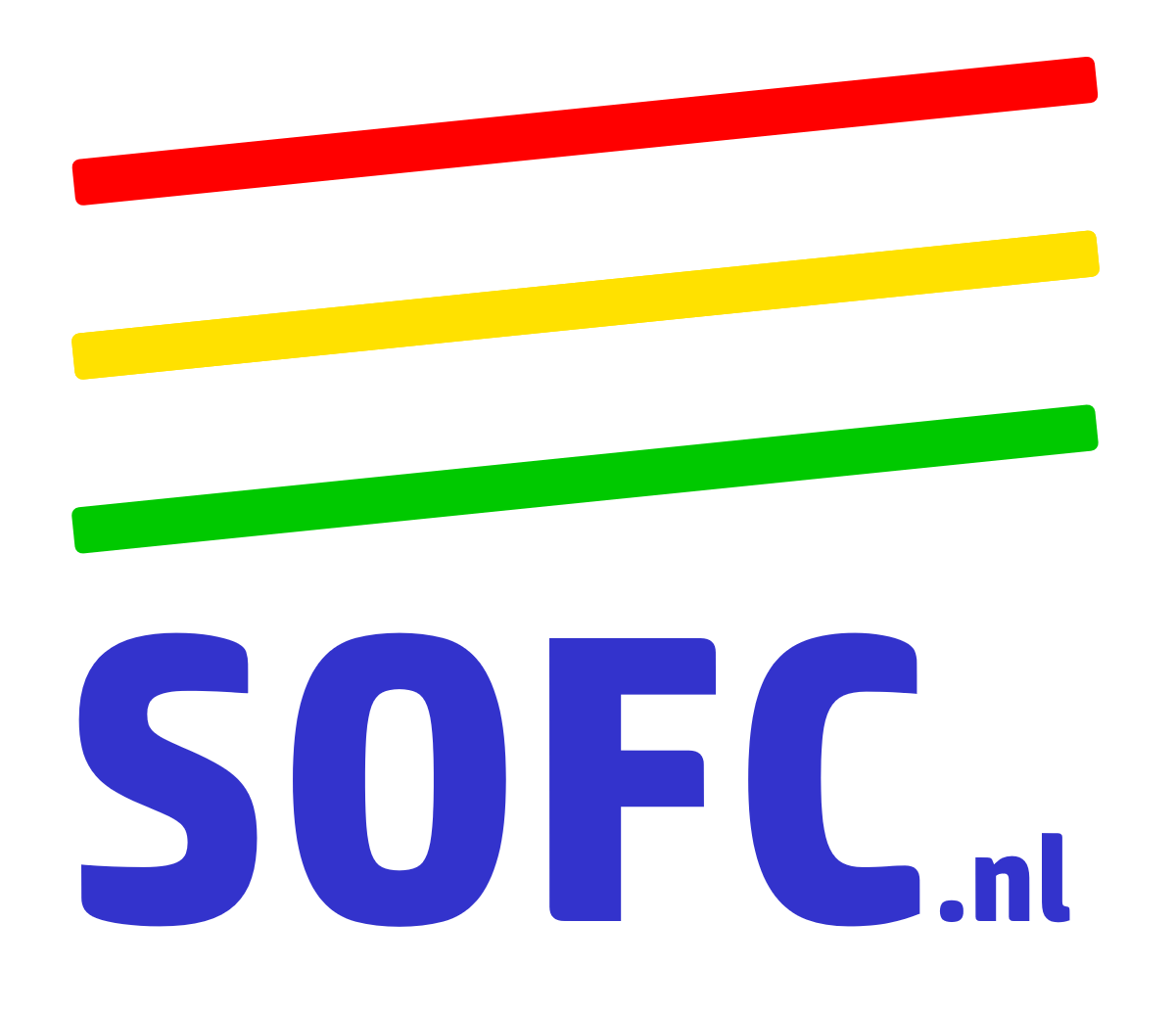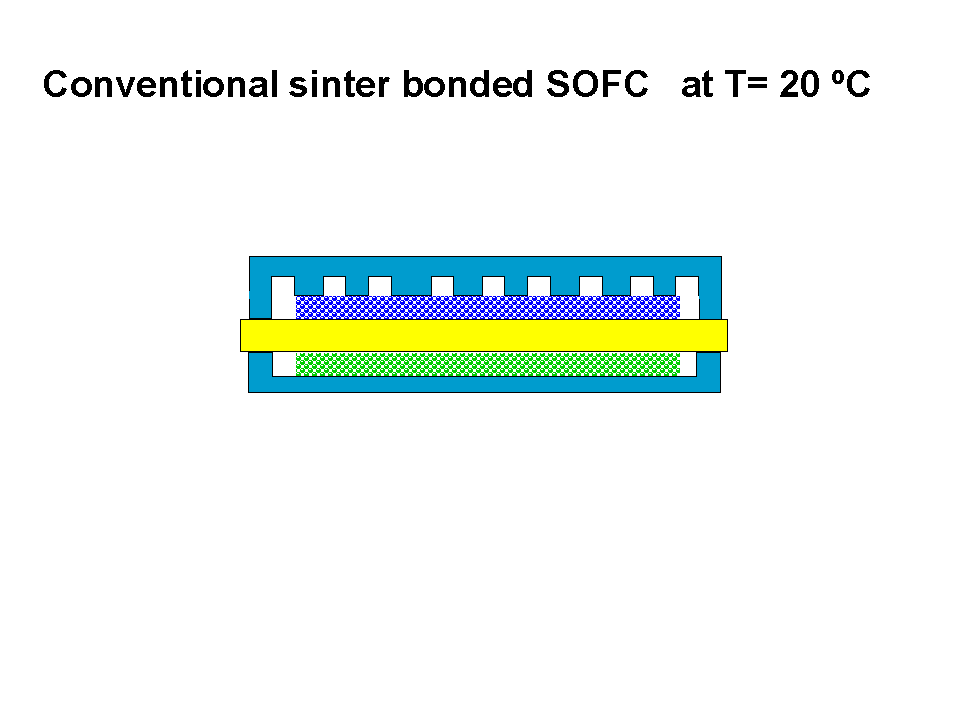SOFC
HELP Design
HELP Applications
Appendix
Fuel cells in General
SOFC's in General
Appendix 2: SOFC's in general

SOFC type fuel cells consist of solid ceramic parts (Solid Oxide Fuel Cell) and operate at high temperatures up to 1000 ° C. This type of fuel cell inherently has the following additional advantages over other types of fuel cells :
- highest electrical efficiency (50- >60 %)
- useful high temperature heat (900-1000 ° C)
- no complex hydrogen production steps
- tolerant for impurities
- fuel type flexibility omnivore (numerous types of fuel besides hydrogen)
- internal reforming capability
- Tubular designs
- Planar designs
The development of commercially attractive SOFC's has been found difficult. For this reason, until now, no market introduction has occurred despite the many efficiency and environmental driving forces. This has primarily been caused by the following factors:
- The sealing and ceramic sinter bonding of different materials is difficult
caused by small remaining differences in thermal expansion and by material compatibility problems of the interconnect caused by its contact with both air and fuel gases.
This can lead to leakage, which has a negative effect on operational reliability during thermal cycling.This is shown schematically in the next figure:

Deviations in thermal expansion and material inhomogeneity result in local stresses in the sinter bonded elements of the cell and thus the cell stack as a whole. Safe operation of such an SOFC type must lead to tight tolerances in the material properties. This demands for exact matching of thermal expansion coefficients and high purity base materials which increases cost.
In addition to this, it limits the possibility of easy introduction of new SOFC materials e.g. the application of novel anode materials for internal reforming of natural gas.
- The production of sinter bonded ceramic units (cell stacks consisting of ceramic sandwich structures) is complex and requires extensive development work.
In large planar designs the cells need to be sinter bonded into fuel cell stacks. This leads to large and costly production losses when a cell stack proves to be leaking during quality control. Recycling is hardly possible because of the mixture of the different bonded ceramic materials.
For more general information on the comparison of SOFC with other types of fuel cells link to : EERE-U.S. Department of Energy